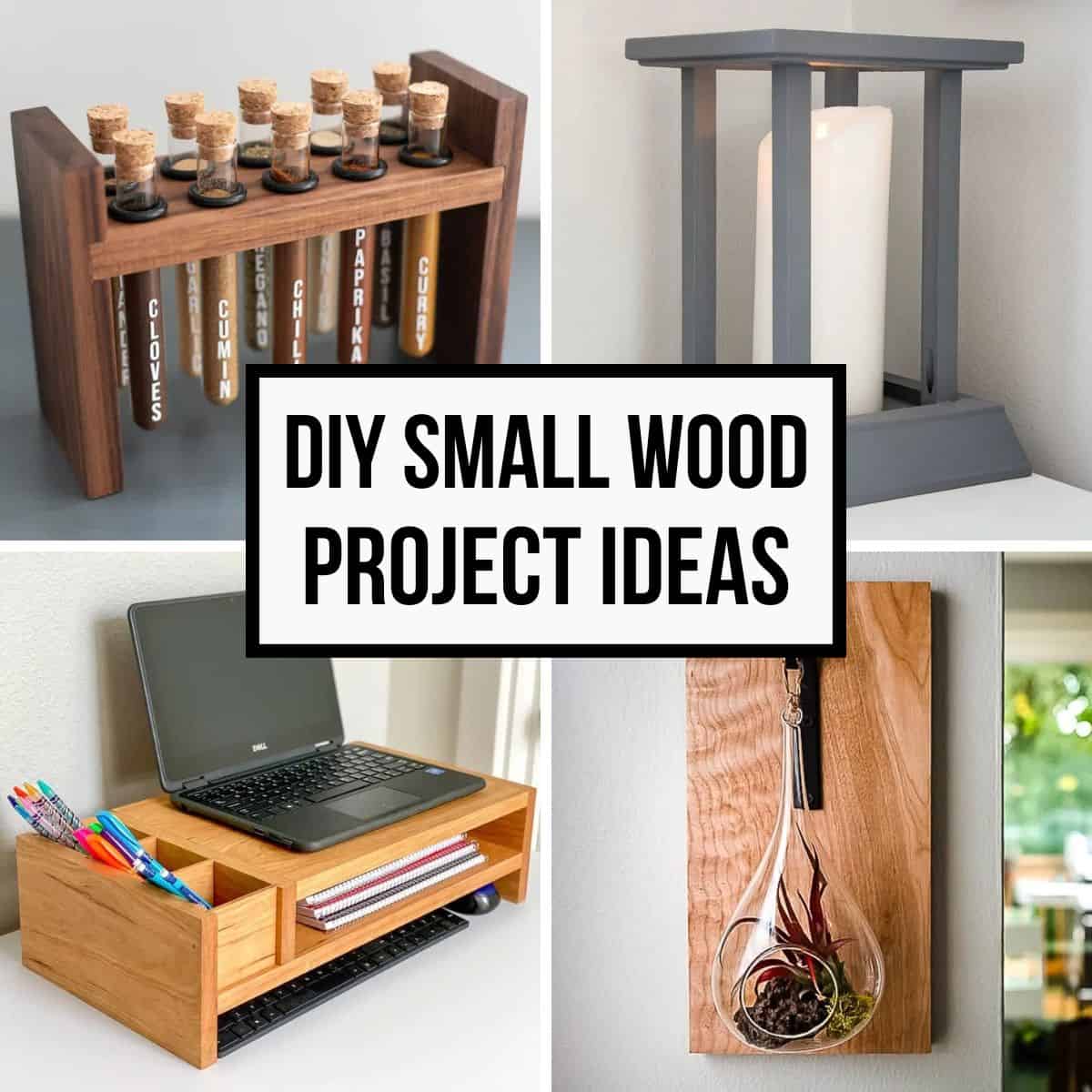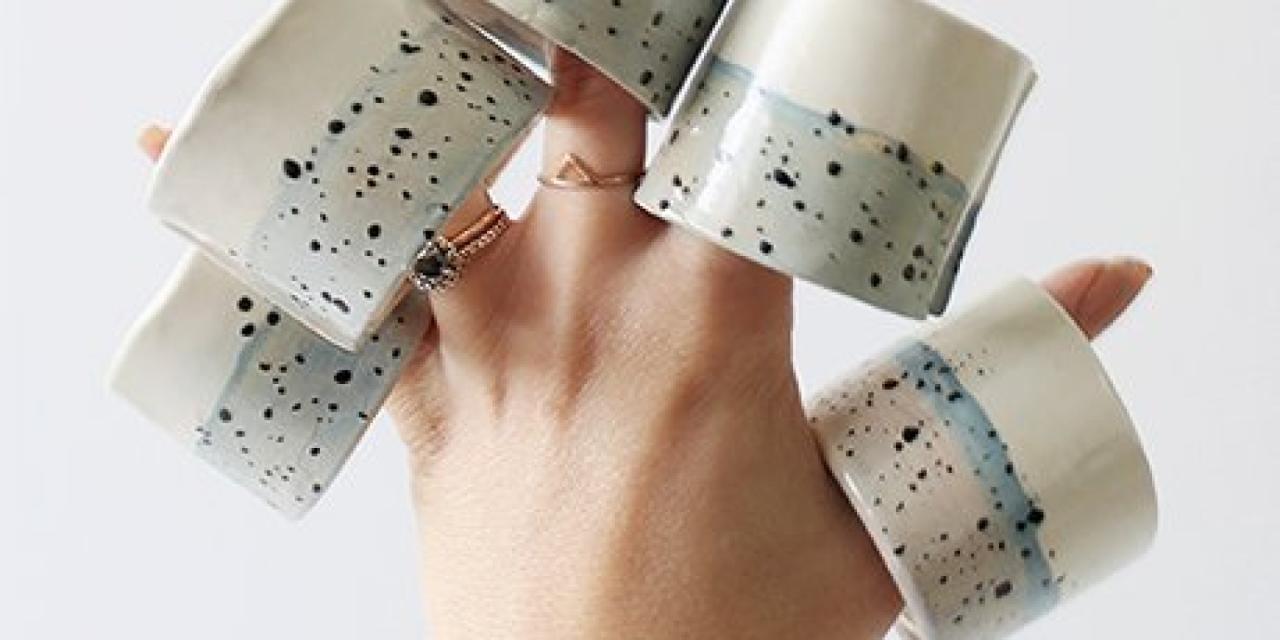DIY woodworking projects offer a fulfilling and rewarding experience, allowing individuals to transform raw materials into beautiful and functional pieces. Whether you’re a seasoned craftsman or a curious beginner, the world of woodworking holds endless possibilities for creativity and self-expression.
The allure of woodworking lies in its ability to combine practical skills with artistic vision. From simple projects like birdhouses and shelves to intricate furniture and decorative items, woodworking empowers you to create tangible results that bring joy and satisfaction. The process itself is a journey of discovery, where you learn to work with wood, master essential techniques, and refine your craftsmanship over time.
Essential Tools and Materials
Starting a woodworking project requires gathering the right tools and materials. This section will provide a comprehensive list of essential tools, organized into categories for easy reference.
Hand Tools
Hand tools are the foundation of any woodworking project, offering precision and control. They are also versatile and can be used for a wide range of tasks.
- Measuring Tools: Accurate measurements are crucial in woodworking.
- Tape Measure: Essential for measuring lengths and distances. Look for a tape measure with a durable blade and a clear, easy-to-read scale.
- Folding Ruler: Provides precise measurements in inches and centimeters, ideal for smaller projects.
- Combination Square: Used for marking precise angles and checking for squareness.
- Marking Tools: Precisely marking the wood before cutting is essential for accurate results.
- Pencil: Used for marking lines and Artikels on the wood. A carpenter’s pencil is ideal due to its durability and visibility.
- Marking Gauge: Used for marking parallel lines at a specific distance from an edge.
- Scribing Tool: Used for transferring the shape of a template or pattern onto the wood.
- Cutting Tools: These tools are used to shape and size the wood.
- Hand Saw: Used for cutting wood in a straight line. A crosscut saw is ideal for cutting across the grain, while a rip saw is best for cutting with the grain.
- Backsaw: Used for making precise cuts, often in combination with a miter box.
- Chisel: Used for carving, shaping, and removing wood. Choose a set of chisels in various sizes to tackle different tasks.
- Plane: Used for smoothing and flattening wood surfaces. A block plane is useful for small projects, while a jack plane is better for larger tasks.
- Clamps: Clamps are essential for holding pieces of wood together securely during assembly or gluing.
- Bar Clamps: Used for holding flat surfaces together.
- C-Clamps: Versatile clamps that can be used for various tasks.
- Quick-Grip Clamps: Fast and easy to use, ideal for temporary clamping.
- Other Essential Tools:
- Hammer: Used for driving nails and securing pieces of wood.
- Screwdriver: Used for driving screws. A set of screwdrivers with various sizes is recommended.
- Wrench: Used for tightening and loosening nuts and bolts.
- Level: Used to ensure that surfaces are level.
Power Tools
Power tools significantly enhance efficiency and speed in woodworking projects. While they are not essential for beginners, they can greatly expand your capabilities.
- Power Drill: Used for drilling holes in wood. Choose a cordless drill for mobility and convenience.
- Circular Saw: Used for making straight cuts in wood.
- Jigsaw: Used for making curved cuts in wood.
- Router: Used for shaping and carving wood.
- Sanders: Used for smoothing and finishing wood surfaces.
Safety Equipment
Safety should always be a priority when working with wood.
- Safety Glasses: Protect your eyes from flying debris.
- Hearing Protection: Protect your ears from loud noises generated by power tools.
- Dust Mask: Protect your lungs from wood dust.
- Work Gloves: Protect your hands from cuts and splinters.
Materials
Wood is the primary material used in woodworking.
- Softwoods: Softwoods are generally less expensive and easier to work with.
- Pine: A common softwood known for its affordability and ease of workability.
- Cedar: Known for its natural resistance to rot and insects, making it ideal for outdoor projects.
- Fir: A strong and durable softwood, often used for structural applications.
- Hardwoods: Hardwoods are denser and more durable than softwoods.
- Oak: A strong and beautiful hardwood, often used for furniture and flooring.
- Maple: Known for its hard, smooth surface, often used for furniture and cutting boards.
- Cherry: A rich, reddish-brown hardwood, prized for its beauty and durability.
- Plywood: A manufactured wood product made by layering thin sheets of wood veneer. It is a versatile material used for a wide range of projects.
- MDF (Medium-Density Fiberboard): A manufactured wood product made from wood fibers. It is a dense and stable material, often used for furniture and cabinet making.
- Fasteners: Fasteners are used to join pieces of wood together.
- Nails: Used for securing pieces of wood together.
- Screws: Used for attaching pieces of wood together.
- Glue: Used for bonding pieces of wood together. Wood glue is a common choice for woodworking projects.
- Finishing Supplies: Finishing supplies are used to protect and enhance the appearance of wood.
- Stain: Used to color wood without hiding its grain.
- Paint: Used to cover wood with a solid color.
- Varnish: Used to protect wood from scratches and moisture.
- Polyurethane: A durable and water-resistant finish that is often used for furniture and floors.
| Tool | Description | Recommended Brands |
|---|---|---|
| Tape Measure | Used for measuring lengths and distances. | Stanley, Craftsman, DeWalt |
| Folding Ruler | Provides precise measurements in inches and centimeters. | Stanley, Craftsman, Starrett |
| Combination Square | Used for marking precise angles and checking for squareness. | Stanley, Craftsman, Starrett |
| Pencil | Used for marking lines and Artikels on the wood. | Black & Decker, Craftsman, Stanley |
| Marking Gauge | Used for marking parallel lines at a specific distance from an edge. | Stanley, Craftsman, Veritas |
| Scribing Tool | Used for transferring the shape of a template or pattern onto the wood. | Stanley, Craftsman, Veritas |
| Hand Saw | Used for cutting wood in a straight line. | Stanley, Craftsman, DeWalt |
| Backsaw | Used for making precise cuts, often in combination with a miter box. | Stanley, Craftsman, Veritas |
| Chisel | Used for carving, shaping, and removing wood. | Stanley, Craftsman, Veritas |
| Plane | Used for smoothing and flattening wood surfaces. | Stanley, Craftsman, Veritas |
| Bar Clamps | Used for holding flat surfaces together. | Bessey, Irwin, Jorgensen |
| C-Clamps | Versatile clamps that can be used for various tasks. | Bessey, Irwin, Jorgensen |
| Quick-Grip Clamps | Fast and easy to use, ideal for temporary clamping. | Bessey, Irwin, Jorgensen |
| Hammer | Used for driving nails and securing pieces of wood. | Stanley, Craftsman, DeWalt |
| Screwdriver | Used for driving screws. | Craftsman, Stanley, DeWalt |
| Wrench | Used for tightening and loosening nuts and bolts. | Craftsman, Stanley, DeWalt |
| Level | Used to ensure that surfaces are level. | Stanley, Craftsman, DeWalt |
| Power Drill | Used for drilling holes in wood. | DeWalt, Bosch, Milwaukee |
| Circular Saw | Used for making straight cuts in wood. | DeWalt, Bosch, Makita |
| Jigsaw | Used for making curved cuts in wood. | DeWalt, Bosch, Makita |
| Router | Used for shaping and carving wood. | DeWalt, Bosch, Makita |
| Sanders | Used for smoothing and finishing wood surfaces. | DeWalt, Bosch, Makita |
Beginner-Friendly Projects
Starting with woodworking can be exciting and rewarding, but it’s essential to begin with simple projects that build confidence and skills. A birdhouse or a small shelf are excellent choices for beginners as they involve basic techniques and manageable dimensions.
Birdhouse Construction
Building a birdhouse is a fun and fulfilling project that allows you to create a welcoming home for birds. Here’s a step-by-step guide to building a simple birdhouse:
Materials:
- Wood (cedar, pine, or redwood are good choices)
- Screws or nails
- Wood glue
- Measuring tape
- Pencil
- Saw (hand saw or circular saw)
- Drill with drill bits
- Sandpaper
- Paint or stain (optional)
Steps:
1. Cut the wood pieces to the desired dimensions. The birdhouse should be at least 6 inches tall, 6 inches wide, and 6 inches deep.
2. Cut the entrance hole in the front of the birdhouse. The hole should be about 1.5 inches in diameter.
3. Attach the sides and back of the birdhouse to the bottom using wood glue and screws or nails.
4. Attach the front of the birdhouse to the sides and bottom.
5. Attach the roof to the top of the birdhouse.
6. Sand the birdhouse to smooth any rough edges.
7. Paint or stain the birdhouse (optional).
8. Install the birdhouse in a safe location, at least 5 feet off the ground.
Common Mistakes and Tips:
- Using the wrong type of wood: Softwoods like pine or cedar are easier to work with for beginners. Avoid hardwoods like oak or maple as they are more challenging to cut and work with.
- Not measuring accurately: Ensure precise measurements to avoid misaligned pieces.
- Not using wood glue: Glue is essential for strengthening joints and preventing the birdhouse from falling apart.
- Not sanding the birdhouse: Sanding smooths rough edges and prevents splinters.
Small Shelf Construction
Building a small shelf is a great way to add storage space to any room. It’s a simple project that involves basic woodworking techniques and requires minimal tools.
Materials:
- Wood (pine, maple, or oak are suitable choices)
- Screws or nails
- Wood glue
- Measuring tape
- Pencil
- Saw (hand saw or circular saw)
- Drill with drill bits
- Sandpaper
- Finishing (stain, paint, or varnish)
Steps:
1. Cut the wood pieces to the desired dimensions. The shelf should be at least 12 inches wide and 6 inches deep.
2. Cut the shelf supports (legs) to the desired height.
3. Attach the shelf supports to the bottom of the shelf using wood glue and screws or nails.
4. Sand the shelf to smooth any rough edges.
5. Finish the shelf with stain, paint, or varnish.
6. Install the shelf in the desired location.
Common Mistakes and Tips:
- Not using sturdy wood: Choose wood that can support the weight of the items you plan to place on the shelf.
- Not attaching the shelf supports securely: Ensure the supports are firmly attached to the shelf to prevent it from collapsing.
- Not sanding the shelf properly: Sanding removes rough edges and improves the overall appearance of the shelf.
- Not finishing the shelf: Finishing protects the wood from scratches and moisture damage.
Joinery Techniques: Diy Woodworking Projects

Joinery techniques are essential for woodworking projects, as they allow you to connect pieces of wood securely and create durable structures. The choice of joint depends on the specific requirements of the project, such as the type of wood, the desired strength, and the aesthetic appeal.
Butt Joints
Butt joints are the simplest type of joint, formed by joining two pieces of wood end-to-end. They are easy to make but relatively weak, especially when subjected to stress. The strength of a butt joint can be improved by using glue, screws, or nails.
Butt joints are primarily used for projects where strength is not a primary concern, such as simple picture frames or boxes.
Dovetail Joints
Dovetail joints are strong and aesthetically pleasing joints that are commonly used in drawers and furniture. They are created by interleaving a series of “tails” on one piece of wood with a corresponding series of “pins” on the other piece. The interlocking nature of the joint provides exceptional strength and resistance to separation.
Dovetail joints are more complex to create than butt joints, but they offer superior strength and a distinctive visual appeal.
Mortise and Tenon Joints
Mortise and tenon joints are another strong and versatile joint commonly used in furniture making. They are created by cutting a rectangular hole (mortise) in one piece of wood and a corresponding projection (tenon) on the other piece. The tenon fits snugly into the mortise, creating a strong and secure joint.
Mortise and tenon joints can be strengthened by using glue, screws, or dowels. They are often used for furniture legs, table tops, and other structural elements.
Wood Finishing Techniques
Applying a finish to your woodworking project is the final step that brings out the beauty of the wood and protects it from the elements. It also provides a smooth, durable surface that is easy to clean.
Types of Wood Finishes
Different wood finishes have different properties, making some better suited for certain projects than others. The most common types of wood finishes include:
- Stains: Stains are pigments that penetrate the wood, changing its color without obscuring its grain. They are available in a wide range of colors and can be used to create a natural or distressed look.
- Paints: Paints are opaque coatings that completely cover the wood, hiding its grain. They offer excellent protection and come in an almost limitless array of colors.
- Varnishes: Varnishes are clear coatings that protect the wood from moisture, scratches, and UV rays. They can be used to enhance the natural beauty of the wood or to create a glossy or matte finish.
- Polyurethanes: Polyurethanes are durable, water-resistant coatings that offer excellent protection. They are available in both oil-based and water-based formulations.
- Lacquer: Lacquer is a fast-drying, hard finish that provides a smooth, durable surface. It is often used on furniture and other fine woodworking projects.
- Shellac: Shellac is a natural resin-based finish that is easy to apply and offers good protection. It is often used on antiques and other fine woodworking projects.
- Oil Finishes: Oil finishes, such as tung oil and linseed oil, penetrate the wood and provide a natural, durable finish. They are often used on cutting boards and other projects that will be exposed to food.
Choosing the Right Finish, Diy woodworking projects
The best wood finish for your project depends on several factors, including:
- Type of wood: Some woods, such as oak and maple, are naturally more porous than others. This can affect how well a finish adheres to the wood.
- Desired look: Do you want a natural, stained, or painted finish? Do you want a glossy or matte finish?
- Durability: How much protection does your project need?
- Ease of application: Some finishes are easier to apply than others.
Preparing the Wood for Finishing
Proper preparation is essential for achieving a smooth and professional finish. Here are some tips:
- Sand the wood: Sand the wood with progressively finer grits of sandpaper to remove any imperfections and create a smooth surface.
- Clean the wood: Wipe the wood down with a tack cloth to remove any dust or debris.
- Apply a wood conditioner: A wood conditioner can help to even out the porosity of the wood and ensure that the finish adheres evenly.
Applying the Finish
Once the wood is prepared, you can apply the finish. Here are some tips for applying a finish:
- Use a quality brush or applicator: A good brush or applicator will help to ensure that the finish is applied evenly.
- Apply thin coats: Thin coats are more likely to dry evenly and prevent runs or drips.
- Let the finish dry completely between coats: The drying time will vary depending on the type of finish and the temperature and humidity.
- Sand between coats: Sanding between coats can help to create a smooth finish.
Finishing Tips
- Work in a well-ventilated area: Many wood finishes release fumes that can be harmful.
- Wear gloves and a mask: Protect your skin and lungs from the fumes.
- Clean up spills immediately: Wood finishes can stain surfaces.
- Practice on scrap wood: Get comfortable with the finish before applying it to your project.
Inspiration and Resources
The journey of woodworking is not just about mastering skills, but also about finding inspiration and drawing upon the vast resources available to you. Whether you’re a seasoned craftsman or a curious beginner, there’s always something new to learn and discover in the world of woodworking.
Popular Woodworking Websites, Blogs, and Online Communities
These platforms offer a wealth of information, project ideas, and a vibrant community of fellow woodworkers.
- Woodworking for Mere Mortals: This website offers a comprehensive collection of woodworking projects, techniques, and articles, catering to both beginners and experienced woodworkers.
- Popular Woodworking Magazine: This online resource features a range of woodworking articles, project plans, and video tutorials, providing a valuable resource for woodworkers of all skill levels.
- Fine Woodworking: A renowned publication for serious woodworkers, Fine Woodworking offers in-depth articles, project plans, and technical information on a wide range of woodworking topics.
- Woodworking.org: This website provides a forum for woodworkers to connect, share projects, and discuss woodworking techniques.
- Reddit’s r/Woodworking: A lively online community where woodworkers can share their projects, ask questions, and get advice from other enthusiasts.
Examples of Inspiring Woodworking Projects from Renowned Artisans
The work of these talented artisans showcases the beauty and creativity that can be achieved through woodworking.
- Sam Maloof: Known for his iconic rocking chairs and furniture pieces, Maloof’s work embodies the essence of handcrafted furniture with its organic forms and meticulous details.
- George Nakashima: A pioneer of contemporary woodworking, Nakashima’s furniture pieces are celebrated for their minimalist designs, use of natural wood, and connection to nature.
- Chris Schwarz: A master of traditional woodworking techniques, Schwarz’s work emphasizes the use of hand tools and classic joinery methods, creating pieces that are both functional and aesthetically pleasing.
Helpful Resources for Learning Woodworking Techniques and Finding Project Ideas
There are numerous resources available to help you hone your woodworking skills and discover new project ideas.
- Woodworking Books: Books offer a structured approach to learning woodworking techniques, covering everything from basic hand tool skills to advanced joinery methods.
- Online Woodworking Courses: Online courses provide a flexible and convenient way to learn woodworking from experienced instructors, offering step-by-step guidance and practical tips.
- Local Woodworking Classes: Attending local woodworking classes provides hands-on experience and the opportunity to learn from experienced instructors in a supportive environment.
- Woodworking YouTube Channels: Numerous YouTube channels dedicated to woodworking offer a vast library of video tutorials, project ideas, and woodworking tips.
Ending Remarks
Embarking on your DIY woodworking journey is an investment in your skills, creativity, and sense of accomplishment. With the right tools, resources, and a passion for learning, you can unlock the potential of wood and bring your woodworking dreams to life. So, gather your materials, choose a project, and let the journey of woodworking begin!
DIY woodworking projects can range from simple shelves to intricate furniture, each offering a unique sense of accomplishment. If you’re looking for a touch of beauty to complement your creations, consider incorporating some DIY flowers, like those found in this guide.
These vibrant additions can add a pop of color and personality to your woodworking projects, making them truly stand out.



